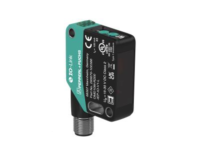
Sentera announced new additions to its small, lightweight Single sensor product family. The new High-Precision NDVI Single and High-Precision NDRE Single utilize patent-pending technology to improve spectral band separation and generate more accurate vegetation index measurements. The High-Precision Single sensor is available in two variants: normalized difference vegetation index (NDVI) and normalized difference red edge (NDRE).
As with all members of the Single product line, the new sensors integrate onto any drone, helping agronomists, consultants, and producers identify growth issues earlier and with greater precision. The sensors are available pre-installed on DJI Phantom 4, Mavic, and Inspire equipment or as dealer-installed upgrades to customer-owned drones.
“We are excited to introduce our High-Precision sensors, offering ag professionals more accurate and affordable crop health data collection options than ever before,” commented Eric Taipale, CEO of Sentera. “We’re committed to offering our customers the best tools to make accurate data measurements, and especially pleased to offer these capabilities within our smallest and most affordable product line.”
The new sensor will make it easier for users to integrate satellite-based index data with drone-based index data. The High Precision filters more closely match the spectral filtering used on most space-based imagers, but retain the same advantages in image resolution compared to satellites. “Digital agriculture is looking for the best sensor for each task. Depending on growth stage, weather, and other factors, that sensor might be on a drone, an airplane, or a satellite,” Taipale continued. “Our High Precision products make it much easier to combine drone data with other sources.”
Intelligent Filtering
High-Precision NDVI and NDRE Single sensors collect the precise, narrow bands that agronomists, crop consultants, and growers rely on to help determine crop vigor. Unlike some competitor’s solutions, Sentera’s filtering technology effectively rejects out-of-band leakage before it can contaminate the measurement and lead to error in vegetative index computation.
“Targeted data capture allows users to filter out ‘spectral noise’ and collect only the isolated emissions in the red, red edge, and NIR bands – true indicators of crop health,” explains Ryan Nelson, chief mechanical engineer for Sentera. “You can be confident that what the sensor identifies as red, red edge, or NIR content is truly within the proper spectral region. This means you are getting the most reliable, accurate, and precise NDVI and NDRE data available today.”
Not every sensor is created equal
Converted point-and-shoot cameras or modified drone cameras without proper filtering will exhibit out-of-channel leakage, producing less accurate index. Sentera’s High-Precision Single sensors use specialized filters, enabling NDVI and NDRE data capture with high precision.
Nelson explains, “With many cameras currently on the market, you’ll see a significant amount of overlap between color channels that affects the accuracy of vegetative health index. When developing our High Precision Agriculture Sensor line, we implemented advanced filtering techniques that provide precise spectral data with complete band separation so users can be confident that they’re collecting accurate and reliable NDVI or NDRE measurements every time.”
Real-time Data – On or Off the Field
Sentera’s Precision Agriculture Sensor solutions, combined with AgVault™ web, desktop, and mobile, offer users an end-to-end data capture solution. Precise sensor data seamlessly integrates with AgVault where real-time crop health data can be analyzed, and analytics are easily performed on or off the field.
Compatible Platforms
Sentera’s High Precision NDVI Single and High Precision NDRE Single sensors easily integrate with the DJI Phantom 4 Pro, Mavic, and Inspire 1 drones as well as several other platforms.
For more information, visit www.sentera.com.



















